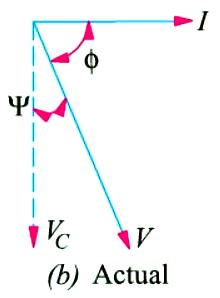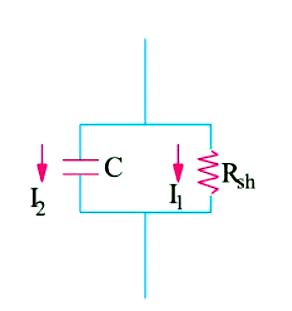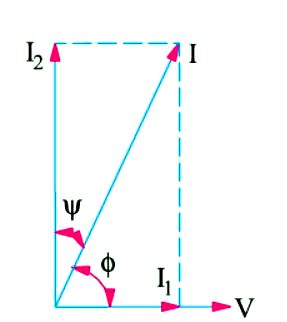Dielectric Loss and Power Factor of a Capacitor
In this article we will discuss or explain on the Dielectric Loss and Power Factor of a Capacitor
An ideal capacitor is one in which there are no losses and whose current leads the voltage by 90° as shown in Figure (A). In practice, it is impossible to get such a capacitor although close approximation is achieved by proper design. In every capacitor, there is always some dielectric loss and hence it absorbs some power from the circuit. Due to this loss, the phase angle is somewhat less than 90° [Fig. 13.30 (B)]. In the case of a capacitor with a poor dielectric, the loss can be considerable and the phase angle much less than 90°. This dielectric loss appears as heat. By phase difference is meant the difference between the ideal and actual phase angles.
As seen from Figure (B), the phase difference ψ is given by ψ = 90 − φ where φ is the actual phase angle, sin ψ = sin (90 − φ) = cos φ where cos φ is the power factor of the capacitor.


Since ψ is generally small, sin ψ = ψ (in radians)
∴ tan ψ = ψ = cos φ.
It should be noted that dielectric loss increases with the frequency of the applied voltage. Hence phase difference increases with the frequency f.
The dielectric loss of an actual capacitor is allowed for by imagining it to consist of a pure capacitor having an equivalent resistance either in series or in parallel with it as shown in Fig. 13.31.
These resistances are such that I2R loss in them is equal to the dielectric loss in the capacitor.
AdBlock-2

∴ Rse = tan ψ/ωC = p.f./ωC
Similarly, as seen from Figure (D),




The power loss in these resistances is P = V2/Rsh = ωCV2 tan ψ = ω CV2 × p.f.
or = I2 Rse = (I2 × p.f.)/ω C
where p.f. stands for the power factor of the capacitor.


Note. (i) In case, ψ is not small, then as seen from Figure (G)

From Figure (D), we get ![]()
(ii) It will be seen from above that both Rse and Rsh vary inversely as the frequency of the applied voltage.
In other words, the resistance of a capacitor decreases in proportion to the increase in frequency.


Read article – phase difference
Visit NCERTplanet.com for NCERT solutions and Textbook downloads




